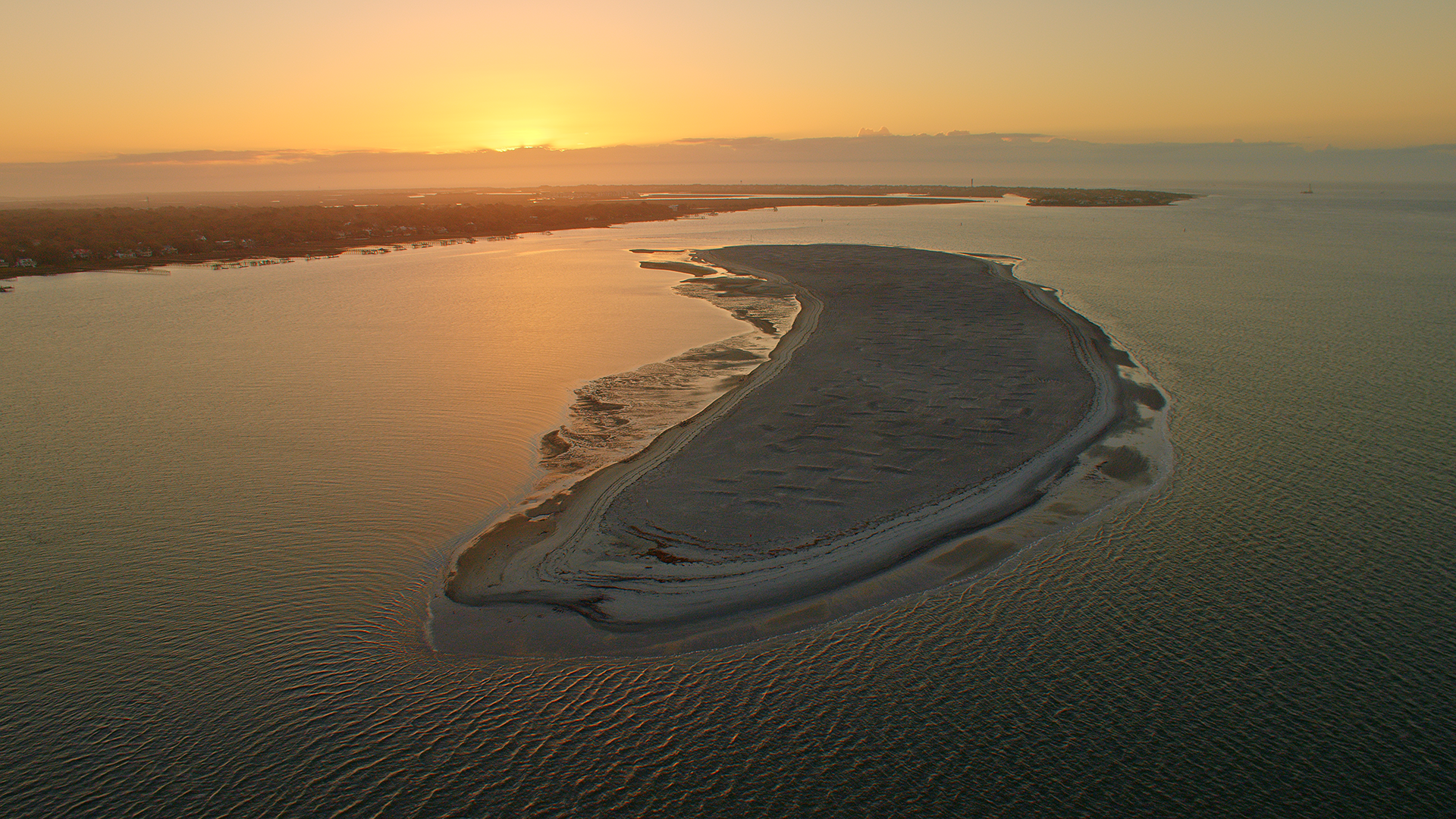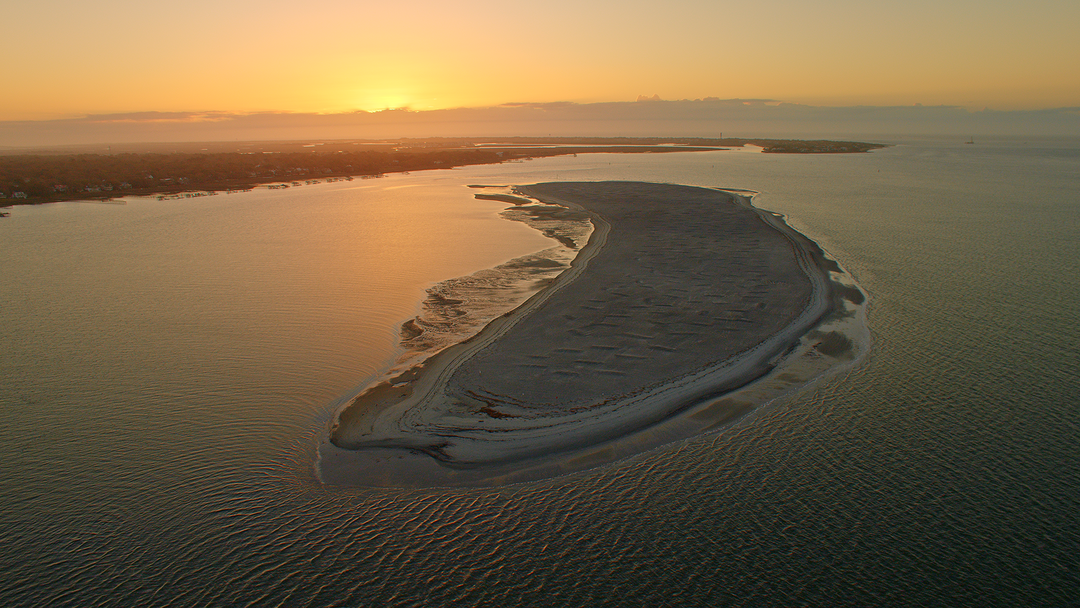CHARLESTON, South Carolina (Apr 5, 2022) - Crab Bank Seabird Sanctuary is back and bigger than ever. This could not have been possible without our many partners working together, a sizeable National Fish & Wildlife Foundation grant, and overwhelming community support. On April 5th, partners, supporters, and government officials came together to celebrate the completion of Crab Bank including Congresswoman Nancy Mace and Governor Henry McMaster who highlighted the project as an example of good government and great collaboration across agencies and stakeholders.
The restoration of Crab Bank Seabird Sanctuary was completed in late 2021 and there are already research and public education efforts taking place around the island. Audubon South Carolina recently commissioned two scientific reports to highlight both the economic and storm protection benefits of the re-established island.
The economic study, completed by Dr. Raymond J. Rhodes from the College of Charleston, and Dr. John C. Whitehead from Appalachian State University, estimated that Crab Bank contributes $5.18 million to the Tri-County areas annually from recreation and tourism activities, including outfitter ecotours, recreational fishing, shrimping, and paddle clubs. The economic benefits of restoration far exceed the costs, making restoration an efficient use of money. After surveying nearby residents, the aggregate benefits value of a restored Crab Bank ranged from a minimum of $15 million to $60 million.
The second study conducted and written by Water Environment Consultants and led by Matthew Goodrich, P.E., found that the newly restored Crab Bank is providing protection to homes and businesses in the nearby community from wind, waves, and storm surge by buffering wave energy coming from the harbor. Crab Bank creates a large cost savings of about $1.6 million to structures that are sheltered by the island in a 10-year storm. In other areas of the coast with less stable shorelines and lower elevation homes, the wave reduction benefits of a bird-nesting island such as Crab Bank would be even greater - highlighting the need for projects like this to be replicated.
Crab Bank is a success story for both birds and people. It highlights the ever-increasing importance of protecting and restoring coastal areas to ensure birds have places to rest and nest, and to ensure that coastal communities have defenses to mitigate the impacts of climate change. Coastal protection and restoration projects can achieve these goals and save the taxpayer in the long run by letting nature serve as the first line of protection. Audubon South Carolina is working to secure support for more projects like Crab Bank, through state and federal funding and by serving on an advisory subcommittee for the South Carolina Office of Resilience’s statewide resilience plan and participating in a Regional Sediment Management coalition of agencies and NGO partners.
As a friendly reminder: During the breeding season (March 15 through October 15), Crab Bank Seabird Sanctuary remains completely closed to landing. From October 16 through March 14, public access is allowed only in the intertidal zone between low and high tide waterlines. Dogs and camping are prohibited year-round at Crab Bank. Please visit https://sc.audubon.org/conservation/crab-bank-seabird-sanctuary to learn more about ongoing work around the island.






